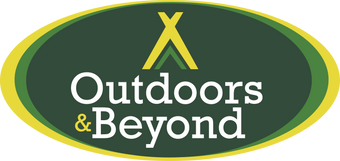Never again run out of gas in the middle of your BBQ with these easy methods to quickly estimate how much gas you have left in your LPG cylinder.

It's finally summer, which means it's time to break out the barbecue, give it a thorough cleaning, slap some snags on it, and have your first backyard cookout of the summer. But how do you know how much gas is left in the bottle? Most LPG cylinders don't come with a gauge to let you know how much gas is remaining and you definitely don't want to run out mid-bbq and finish cooking your meal inside.
Fortunately, there are a few easy ways to quickly check the level of gas before firing up the barbie.
One of the quickest ways to approximate the level of gas in your cylinder, is with a bit of hot water.
- Fill a cup or a small bucket with hot water from the tap.
- Pour the water down the side of the cylinder.
- Run your hand down the side of the cylinder and feel for a cool spot.
- The top of the cool spot is the fill level of the cylinder.
What's happening here is the liquid propane inside the cylinder is absorbing the heat from the water, which makes the metal wall of the cylinder cool to the touch, whereas the wall above the fill line will be warm.
This doesn't give you a very accurate measure of how much gas is left, but rather a decent approximation. It's certainly enough to let you know whether or not you should head to the store before starting to cook.
If you've been dealing with gas cylinders for a long time, you can approximate whether it's time to get it refilled simply by picking it up. But to get a better idea of how much gas is remaining, you will need a scale.
All gas cylinders come with a few numbers stamped on the handle - most
commonly the WC (water capacity) and TW (the weight of the tank when
it's empty). Most gas cylinders for barbecuing weigh around 8 kilograms when empty and hold roughly 9 kilograms of gas.
To measure how many kilograms of LPG are remaining, weigh the cylinder and subtract the tare weight.
For instance, if you weigh the cylinder and have 12 kilograms total and have a tare weight of 8 kilograms), you have 4 kilograms of LPG - approximately half remaining.
A little math goes a long way in being able to estimate how long one gas cylinder will last. First, consider that 3.8 litres of LPG produces approximately 92,000 BTUs. Divide that number by the BTUH (BTUs per hour) rating of your BBQ. This leaves you with the number of hours it will take for you to use 3.8 litres of LPG at the BBQ's maximum heat setting.
Finally, multiply the number of hours by the number of litres in the cylinder. A full 9 kilogram gas cylinder holds 17.8 litres of LPG. If your BBQ has an output of 32,000 BTUH, you would get approximately 13.5 hours of cook time out of a standard LPG cylinder if you were cooking at maximum heat. If you're only using
two out of four burners, you could estimate that the approximate cook time would be double.
While this method is still just a rough approximation, it's helpful to keep track of cook times and heat settings. But if you forget to write it down somewhere, you can pair this method with one of the two above methods to calculate roughly how much cook time is left in a tank. For instance, if you weigh a tank and have 4.5 kilograms of gas left, you would have approximately 6.75 hours of cook time left in the cylinder at full heat.
When approximate numbers just won't do and you need precision, it's time to invest in a gauge. Gas cylinder gauges come in several different forms and are easily found at camping and barbecue stores.
- Inline pressure gauges install between the gas line from the BBQ and the cut-off valve on the gas cylinder. These gauges work on pressure and give a readout letting you know when the cylinder is full, low or empty.
- Analog gas scales work much like luggage scales, except they're already tared for the for the weight of the cylinder. Slip the hook through the handle of the tank, pick up and read the remaining gas level.
- Digital gas cylinder scales work by constantly weighing the tank and provide a digital readout of remaining cook time and gas fill percentage.
These gauges and scales range from about $15 to $65 and might prove useful if you do a lot of cooking on the BBQ.






Leave a comment